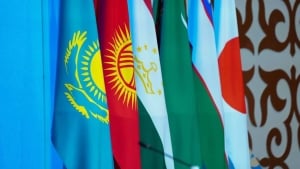
A new infographic prepared by Visual Capitalist experts has reorganized countries' areas based on two main indicators – the sum of land and inland water bodies (lakes, rivers, reservoirs). This was reported by Zamin.uz.
As a result, regions rich in lakes became even more prominent. The four largest countries on the planet remain unchanged: Russia, Canada, China, and the United States together occupy approximately 30 percent of the Earth's land area.
Russia is the absolute leader, covering an 11 time zone area connecting Europe and Asia, with more than 65 percent of its territory lying within permafrost zones. Canada stands out with its natural landscapes, featuring tundra and taiga regions in the north, dominated by an Arctic climate.
However, the majority of the population lives just 100 kilometers from the US border. The abundance of lakes and inland water bodies further increases the country's total area.
The territories of China and the USA demonstrate climatic and geographical diversity. They include areas ranging from the Gobi Desert to subtropical forests, and from the Colorado canyons to the Great Lakes basin.
Including inland waters in the area calculation increases the total size of these countries. At the other end of the spectrum are very small territories.
For example, the Principality of Monaco has an area of only 2.1 square kilometers, making it the second smallest sovereign state after the Vatican. Approximately 39 thousand people live there, making it one of the most densely populated areas in the world.
Gibraltar is a British overseas territory covering an area of 6.8 square kilometers. It holds high geopolitical significance as it is located in southern Spain, on the main sea route connecting the Atlantic Ocean and the Mediterranean Sea.
The new infographic clearly shows not only large countries but also territories that, despite their small size, have strategic or demographic importance. Additionally, accounting for inland water bodies demonstrated how this affects the results when determining total area.
This information helps to better understand the geographical and political significance of countries.







